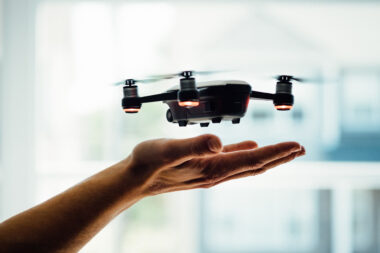Introduction
Industrial Internet of Things (IIoT) systems comprise interconnected sensors, machines, controllers, and data platforms that monitor and control industrial processes. As industrial data grows exponentially, traditional control systems fall short in deriving actionable insights. Machine Learning addresses this by enabling systems to learn from historical and real time data, adapt to dynamic environments, and autonomously respond to emerging conditions. The integration of ML into IIoT represents a shift from rule based automation to intelligent, data driven industrial systems.
System Architecture for ML-Enabled IIoT
The system architecture of a Machine Learning enabled IIoT platform is designed to support scalable, real-time, and intelligent decision making by integrating multi layered components from data acquisition at the sensor level to ML model deployment across edge, fog, and cloud resources. The architecture generally consists of five key layers:
1. Perception Layer (Device & Sensing Layer)
This is the foundational layer responsible for data collection from physical assets and processes within industrial environments.
Key Components:
- Industrial Sensors: Monitor parameters like temperature, pressure, vibration, flow rate, current, gas concentration, and machine health.
- Actuators: Carry out control commands, such as switching, rotating, heating, or opening valves.
- Vision Modules: CMOS/CCD camera modules for visual inspection and object detection.
- Embedded Microcontrollers: Low-power units for signal preprocessing and local anomaly detection.
Functions:
- Converts analog phenomena into digital signals.
- Filters and preprocesses raw data to reduce noise and bandwidth usage.
- Encodes data with timestamps and location identifiers for context aware ML.
2. Edge Layer
This layer enables real-time ML inference and localized decision making close to the data source, reducing latency and reliance on cloud bandwidth.
Key Components:
- Edge Gateways: Industrial computers or microcontrollers with ML inference capabilities.
- Edge AI Accelerators: Low power hardware for running neural networks.
- Sensor Fusion Units: Combine readings from multiple sensors to derive higher level insights.
Functions:
- Real-time analytics: Anomaly detection, threshold based alerts, and image classification.
- Feature extraction: Converts raw data into meaningful ML features.
- Lightweight model inference: Runs compact ML models (e.g., decision trees, compressed CNNs).
- Local actuation: Triggers control actions without waiting for cloud based instructions.
3. Fog Layer (Intermediate Intelligence Layer)
The fog layer bridges the edge and cloud layers by enabling semi local analytics and storage. It acts as an aggregation and coordination point.
Key Components:
- Industrial Servers: On site servers with moderate compute and storage.
- Data Aggregators: Collect sensor streams and preprocess them for higher order analysis.
- Message Brokers and Queues: Manage asynchronous communication (e.g., MQTT brokers).
Functions:
- Batches and filters sensor data for upload to cloud.
- Hosts shared ML models for multiple edge devices.
- Coordinates updates and retraining of local models.
- Handles local database synchronization and temporary storage in case of network outages.
4. Cloud Layer (Training and Central Intelligence Layer)
The cloud layer is used for centralized ML model training, analytics, and long term storage.
Key Components:
- Data Lakes and Warehouses: Store structured and unstructured time series data.
- ML Model Training Engines: High performance computing environments for training deep learning models.
- Historical Analysis Tools: Forecast trends, identify long term patterns, and evaluate KPIs.
Functions:
- Train supervised and unsupervised ML models using aggregated data.
- Evaluate model performance, accuracy, and drift.
- Push updated or retrained models to fog or edge devices.
- Enable dashboards for predictive analytics, visualizations, and operator insights.
5. Application Layer (User Interface and Interaction Layer)
This layer provides interfaces for human operators, supervisors, and enterprise applications to interact with ML-enabled IIoT systems.
Key Components:
- HMI Panels & Dashboards: Show real time operational status, alarms, and predictions.
- Control Interfaces: Let users adjust parameters or respond to predictive alerts.
- APIs & Integration Services: Connect to SCADA, ERP, MES, or digital twin platforms.
Functions:
- Visualizes AI insights and predictive outputs in intuitive formats.
- Enables threshold configuration and event response.
- Sends automated alerts via email, SMS, or mobile apps.
- Interfaces with enterprise systems for cross functional decision making.
6. Data Flow & ML Feedback Loop
The ML lifecycle within the architecture follows this pattern:
- Data Collection: Sensor readings captured at the Perception Layer.
- Preprocessing & Inference: Edge layer performs initial data conditioning and ML inference.
- Aggregation & Storage: Fog layer aggregates, stores, and forwards data to cloud.
- Model Training: Cloud retrains ML models using fresh and historical data.
- Model Deployment: Updated models pushed back to edge for inference.
- User Interaction: Application layer provides actionable insights and control.
Security and Reliability Features (Cross-Cutting Concerns)
- Data Encryption: TLS/SSL at all network layers to protect data in transit.
- Redundancy & Fault Tolerance: Local buffers and fallback logic in edge/fog to ensure resilience.
- Authentication & Access Control: Role-based access with real-time audit logs.
- Model Validation & Versioning: Ensures safe deployment of ML models to mission-critical systems.
Machine Learning Algorithms for IIoT
| Application Area | ML Techniques Used |
|---|---|
| Predictive Maintenance | Regression, Random Forest, LSTM, CNN, XGBoost |
| Anomaly Detection | Autoencoders, Isolation Forest, One-Class SVM |
| Quality Control | SVM, K-NN, Decision Trees, PCA |
| Demand Forecasting | Time-Series Models (ARIMA, Prophet), RNN, LSTM |
| Energy Optimization | Reinforcement Learning, Deep Q-Networks |
| Visual Inspection | CNN, YOLO, Faster R-CNN (Edge vision models) |
Technical Components
Sensors and Actuators
- Vibration Sensors: MEMS accelerometers (ADXL335, MPU6050)
- Temperature Sensors: RTDs, Thermocouples, DHT22
- Current/Voltage Sensors: ACS712, CT sensors
- Camera Modules: MIPI CSI, USB3 industrial cameras
Embedded ML Controllers
- Edge Devices: Raspberry Pi 4, STM32H7, ESP32-S3
- AI Accelerators: Google Coral TPU, Intel Movidius, NVIDIA Jetson Nano
- Frameworks: TensorFlow Lite, PyTorch Mobile, Edge Impulse
Communication and Middleware
- Protocols: MQTT, AMQP, OPC-UA, DDS
- Middleware: Node-RED, Apache Kafka, Kura, ThingsBoard
ML Pipelines
- Data Acquisition → Preprocessing → Feature Extraction → Model Inference → Feedback Loop
Implementation Methodology for Machine Learning in IIoT
The successful implementation of machine learning (ML) in an Industrial Internet of Things (IIoT) environment involves a multi-phase workflow encompassing data acquisition, model development, system integration, and continuous optimization. The methodology integrates sensor infrastructure, embedded processing, data communication, ML pipeline design, and feedback loops for adaptive performance in dynamic industrial conditions.
Step 1: Define Objectives and Use-Cases
- Identify Operational Goals: Examples include predictive maintenance, energy optimization, quality assurance, and anomaly detection.
- Determine KPIs: Mean time between failures (MTBF), energy cost savings, process downtime, defect rate, etc.
- Select Equipment and Processes: Define the machines, lines, or sensors to be monitored.
Step 2: Sensor Network Design and Deployment
- Sensor Selection:
- Vibration Monitoring: MEMS accelerometers, gyroscopes (e.g., MPU-6050)
- Temperature & Pressure: RTDs, thermocouples, piezoresistive sensors
- Current & Voltage: Hall effect sensors, CTs
- Environmental: Gas sensors, humidity sensors, particulate monitors
- Deployment Strategy:
- Position sensors based on failure critical zones.
- Use redundant sensors in safety critical processes.
- Integrate smart sensors with onboard preprocessing capabilities.
Step 3: Edge Processing and Data Acquisition
- Edge Controller Installation:
- Microcontrollers (ESP32, STM32), SBCs (Raspberry Pi), or industrial edge computers.
- Real-time operating systems or lightweight Linux for deterministic task handling.
- Data Handling Techniques:
- Preprocessing: Noise filtering, outlier removal, normalization
- Feature Extraction: FFT (for vibration), RMS, entropy, temperature gradients, etc.
- Time Synchronization: Use of NTP or GPS timestamps for correlating multi-sensor data.
- Data Sampling Strategy:
- Define sampling rate per application (e.g., 10 kHz for vibration, 1 Hz for temperature).
- Use sliding windows or exponential moving averages for time-series segmentation.
Step 4: Communication and Data Management Infrastructure
- Networking Protocols:
- Short range: Modbus RTU, RS-485
- Long range/IoT: MQTT, OPC-UA, CoAP over TCP/UDP
- LoRaWAN/NB-IoT for remote equipment
- Data Transfer Strategy:
- Hierarchical push/pull method: edge → fog → cloud
- Use of message brokers and buffering queues for reliable data transmission
- Compression: Protocol Buffers, LZ4 for efficient payload delivery
- Storage Platforms:
- On premise: Time series databases (InfluxDB, TimescaleDB)
- Cloud: Object stores, relational databases, data lakes for ML training
Step 5: Machine Learning Model Development
- Data Annotation and Labeling:
- Historical records from CMMS or SCADA used to label failure events
- Human in the loop systems for data validation
- Feature Engineering:
- Time domain, frequency domain, and statistical features extracted from sensor data
- Dimensionality reduction using PCA or t-SNE
- Model Selection:
- Classification Tasks: Random Forest, XGBoost, SVM
- Regression Tasks: Linear Regression, LSTM, GPR
- Anomaly Detection: Isolation Forest, Autoencoders, K Means
- Reinforcement Learning: Q learning for control optimization
- Model Training:
- Offline on centralized servers using Python (TensorFlow, PyTorch, Scikit-learn)
- Cross-validation, hyperparameter tuning, and model ensembling
- Evaluation Metrics: Accuracy, F1-score, AUC, RMSE, confusion matrix
Step 6: Edge Deployment of ML Models
- Model Optimization for Edge:
- Techniques: Quantization, pruning, model distillation
- Frameworks: TensorFlow Lite, ONNX, PyTorch Mobile, TinyML libraries
- Deployment Process:
- Convert and compress trained models
- Integrate into edge firmware with control logic
- OTA updates enabled for model upgrades
- Latency and Memory Profiling:
- Ensure inference time <100ms for real time applications
- Fit models into <256 KB RAM (for MCU-based inference)
Step 7: Integration with Control Systems and Interfaces
- Feedback Integration:
- ML inference output connected to local PLC or SCADA system via OPC-UA/MQTT
- Automated actions: Slow down motors, trigger maintenance alerts, adjust process parameters
- Visualization Dashboards:
- Web-based interfaces using Grafana, Node-RED, or custom tools
- Historical trends, predictions, real-time alerts, and model insights visualized
Step 8: Model Monitoring, Drift Detection, and Retraining
- Drift Detection Techniques:
- Statistical process control (SPC) on model output distributions
- Retrain models when drift exceeds threshold (e.g., concept or data drift)
- Continuous Learning Workflow:
- Collect new labeled data periodically
- Use transfer learning or incremental learning algorithms
- Deploy retrained models to edge with version control
Step 9: Cybersecurity and Reliability Assurance
- Security Protocols:
- TLS for secure MQTT/HTTPS communication
- Authentication and authorization mechanisms at each layer
- Secure boot and firmware validation for edge devices
- Fail Safe and Redundancy:
- Manual override for critical decisions
- Local cache storage to prevent data loss
- Redundant sensor clusters for fault tolerance
Use Cases and Applications
- Smart Manufacturing: ML predicts equipment failure, reducing downtime.
- Process Optimization: Algorithms fine-tune parameters in chemical and food industries.
- Supply Chain Forecasting: RNN models forecast raw material needs.
- Energy Management: RL-based systems dynamically manage energy distribution.
- Computer Vision for QA: Real-time defect detection in production lines.
Conclusion
Machine learning significantly amplifies the intelligence of IIoT systems, enabling a shift from reactive automation to predictive, autonomous operations. As sensors and embedded AI continue to evolve, ML-enabled IIoT will play a central role in transforming industries through improved efficiency, safety, and adaptability. Future research must address real-time interpretability, standardization, and scalability for widespread adoption.



